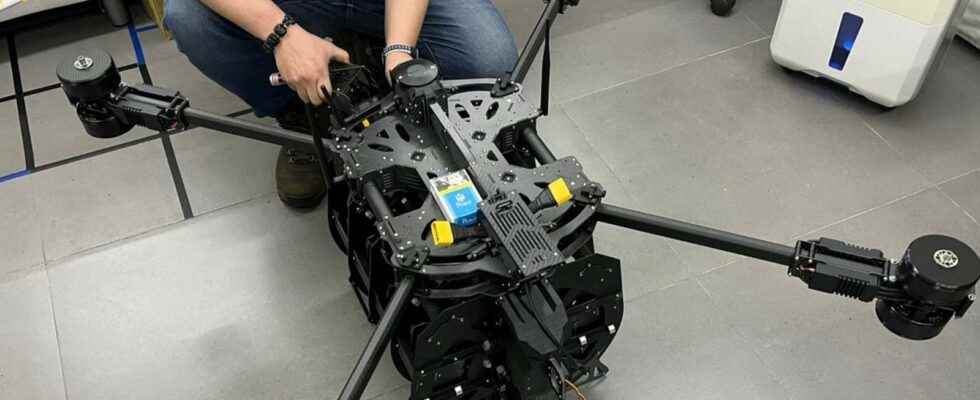With its swarms of armored vehicles, tanks, missile launchers, guns and mortars, the war in Ukraine is a high-intensity conflict not seen since World War II. It is also a school of war where the staffs of the whole world sometimes discover with surprise that certain technologies, which may not seem serious, can change the course of things.
This is how the Turkish combat drone TB-2 Bayraktar became one of the stars on the battlefield and armored terror. Besides this tank-destroying drone, there’s a swarm ofaircraft motley in theair on the forehead area, such as the phoenix ghost a drone-munition specially modified to meet the needs of Ukrainian fighters. Among the Russians, to observe the enemy positions, these are Orlan-10s whose Futura was able to relate craft design. There are also many small drone from the trade, with in particular the famous brand DJI and even the French parrot. These drones accessible to everyone for sometimes less than 2,000 euros become useful and discreet observers but also formidable weapons when they are tinkered with.
A multi-magazine for mortar shells
And now, civilian manufacturers are getting in on it, tailoring their commercial models to the needs of fighters. This is particularly the case of an anonymous Dutch company which has developed a drone equipped with a carousel-type loader to drop several small shells. An invention intended to help the Ukrainian war effort. pictures and a video have also begun to circulate on the social networks late last week, and show what appears to be a commercial quadcopter-style drone equipped with a magazine capable of trapping the small mortar rounds typically fired from an assault rifle. The drone would already be used in the field. Thus, a video clip, shows an attack against a Russian tank T-72B3. It receives four mortar shells dropped consecutively. Little chance of escaping such a predator which multiplies the opportunities to reach its target.
Video probably shot from another surveillance drone. The shape of the mortar shells and the multiple drops suggest that this is indeed the drone designed by the Dutch company. © Twitter
A beaker to delay the detonation of the grenade
This process also makes it possible to engage several targets from a single drone. The dropping of this kind of ammunition by drone is far from being a novelty. This has been done in an artisanal way for years and in particular in the Levant, where the jihadists tinkered with them so that they could drop pomegranates light as of 2017. A method for which the United States was not prepared. It seems today that the Russians are not much more so.
This is all the more the case since this process has been improved by the Ukrainians who manage to hit the target precisely by creating fins, or even a fuselage with a 3D printer. But, do not believe that the Russians are not handymen. Videos posted on Twitter actually show commercial Russian drones dropping grenades. It is even quite artisanal, even grotesque, if the charge were not so dangerous. Thus, we can see a grenade inserted into a goblet in plastic fall from the drone. This process makes it possible to maintain the spoon, that is to say the small lever which triggers the load when it is ejected. The handymen felt that, upon impact, the tumbler should release the grenade and blow up that famous spoon. Clever, but not necessarily systematic…
Finally, what is important is that these commercial drones can become dangerous bombing machines. The fact that two major armies both use the same concepts, which were implemented by armed groups only a few years ago, is a sign. We thus better understand why European regulations are doing everything to constrain the use of drones above 800 grams. This has the effect of directing most of the market towards ultra-light drones of 250 grams which are incapable of carrying an explosive charge.
Interested in what you just read?
